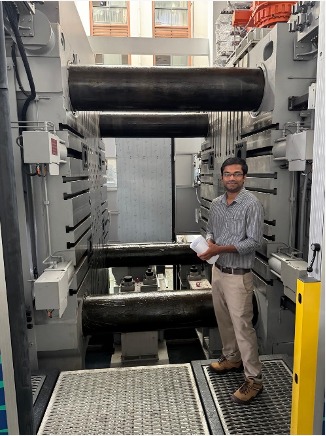MES Offers Customers Megacasting Power: Now with a Bühler 4400-Ton Die Casting Press
We’re thrilled to announce a monumental leap forward in our manufacturing capabilities! We’re excited to share that one of our key suppliers in Ningbo, China, has recently adopted a state-of-the-art BUHLER 4400-ton die casting press. This strategic investment signifies a new era of possibilities for our partners and clients, particularly those in the automotive, e-mobility, and other industries demanding large, complex, and high-integrity metal components.
Understanding the BUHLER 4400-Ton Marvel: Core Function and Key Specifications
At its heart, this 4400-ton press is a cold chamber high-pressure die casting (HPDC) machine. This means molten metal, typically aluminum or magnesium alloys, is precisely ladled into a shot sleeve before being injected at extremely high speeds and pressures into a steel die cavity. Rapid solidification then forms a precisely shaped part. The “4400 tons” refers to the incredible die locking force (MAX 44,000 kN) that clamps the two halves of the mold together, preventing molten metal from flashing out during injection.
This machine is a true titan, designed for components that push the boundaries of size and complexity. Here are some of its impressive technical specifications:
- Tie-Bar Space: Around 72.8 x 72.8 inches (approx. 1850 x 1850 mm), providing ample room for large dies.
- Die Stroke (Clamping Stroke): A significant 70-80 inches (approx. 1778 – 2032 mm), allowing for efficient part ejection.
- Min-Max Die Height: A broad range of 35.4 – 82.7 inches (approx. 900 – 2100 mm), accommodating diverse die sizes.
- Ejector Force: Over 120 US Tons (approx. 1000 kN), ensuring robust part removal.
- Shot Force: Can exceed 265 US Tons (approx. 2350 kN), delivering powerful injection.
- Shot Stroke: Often 55-63 inches (approx. 1400 – 1600 mm), enabling flexible shot sizes.
- Casting Pressure (Intensification): Very high, typically 15,000 – 20,000+ psi (approx. 100-140+ MPa), for superior material density.
- Max. Casting Area: Up to an astounding 1550 – 1900+ square inches (approx. 10,000 – 12,000+ cm²).
- Injection Speed: High-performance capabilities can achieve speeds up to 8.2 m/s for rapid cavity filling.
- Shot Weight (Aluminum): Capable of producing substantial castings ranging from 114 to 180+ pounds (approx. 50-80+ kg) of aluminum.
- Machine Dimensions: These machines are truly enormous, often exceeding 600 inches (15+ meters) in length, requiring significant floor space and robust infrastructure.





